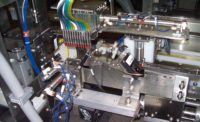Industry Insights: Sustainable Inks
The Next Step in Sustainable Packaging: Natural-Based Inks

For product and brand managers responsible for food and beverage packaging, 2018 marked an increased focus on reducing single-use plastics. In the past year, more than 250 companies signed the MacArthur Foundation’s New Plastics Economy Global Commitment to reduce or eliminate single-use plastics. Collins’ Dictionary named “single-use” the word of the year, and plastic straw pollution came under intense scrutiny, leading to their ban in cities around the world. Such progress is necessary for the future of the food and beverage category for both foodservice brands and CPG companies, not to mention the environmental health of the planet, but it’s also an important and exciting step toward the future of sustainable packaging.
With such a bright spotlight on adopting substrate alternatives, savvy product and brand managers are taking a proactive approach to product stewardship and sustainable packaging. One often overlooked aspect for them to start with is the ink used to print on their packaging. Proper product stewardship goes beyond replacing single-use plastics and allows product and brand managers to improve the safety and environmental health impact of the entirety of their products to be sure that they are both meeting regulations and avoiding future risk. Being proactive with consideration of packaging and ink content helps brands avoid regulatory risk and improve sustainability. However, a new class of inks using natural and renewable ingredients is emerging as an alternative providing a path to help companies prepare for new and future packaging regulations, get ahead of the clean packaging movement and enable them to meet sustainability goals.
Written in … Ink
Natural-based inks contain 50 to 90 percent natural and renewable resources, like algae and inedible plants, that don’t impact the food supply. HAVI, a leader in foodservice packaging with more than 40 years’ experience working with the world’s best-known foodservice brands, packaging suppliers and technology owners to accelerate products to market, announced the development of natural-based inks in January.
Furthermore, by partnering with two of the largest ink suppliers in the world, INX International Ink Co. and Sun Chemical, HAVI helped to develop formulations that displace petro-based chemicals with natural and renewable-based materials. The renewable components and natural materials used do not compromise the performance of the ink. In fact, these natural-based inks offer better on-press performance, can increase efficiency, are fast-drying and rub-resistant. They also come dispenser-ready and have been shown to require less clean-up for printers and converters.
Naturally Clean
Beyond reducing regulatory risk, natural-based inks represent another aspect of sustainability: clean packaging, which is the principle of simplifying materials and chemistries for safer, more sustainable packaging. Clean packaging builds trust with consumers who are starting to demand more and more transparency from companies about what chemicals are going into their products and how they’re being made.
According to a HAVI survey, 70 percent of consumers see clean packaging as equally or more important than clean food. The same survey found that consumers tend to associate clean packaging with “free from chemicals.”
Product stewardship is critical to brands that are pursuing clean food and clean packaging because it enables a full understanding of the chemistries they’re using, backed by scientific data. They can use that data to make strategic business decisions about the health and environmental impact of their products, and to achieve their sustainability goals.
Green Ink
The deliberate use of natural-based inks also allows companies to demonstrate their commitment to sustainability. Using sustainable materials such as those found in natural-based inks help reduce a company’s ink-related CO2 footprint by 20 percent to 30 percent compared to standard aqueous inks*. Natural-based inks have already replaced over 2 million pounds of petro-based chemicals, waxes and additives annually. This equates to 5.6 million pounds of CO2 or the equivalent of 15.28 coal railcars.
Sustainable Packaging? Think Ink
As brands look to the next phase in sustainable packaging – driven by increased consumer demands for transparency and environmentally safe materials — natural-based inks offer a way for companies to reduce regulatory risks, build trust with consumers and tell a stronger sustainability story.
*Based on EUPIA dry ink baseline for aqueous based inks of 3.092kg CO2/kg dry ink.
HAVI
Looking for a reprint of this article?
From high-res PDFs to custom plaques, order your copy today!








